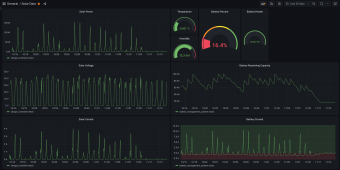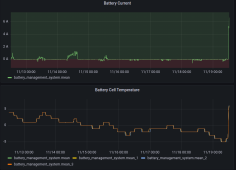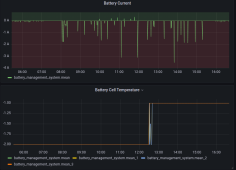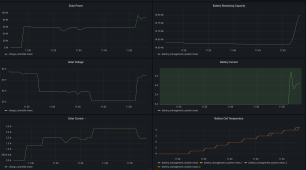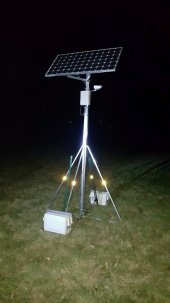sirloins
New Member
- Joined
- Jun 4, 2022
- Messages
- 8
Hi,
So I purchased these three items:
2 x 100W Renogy Solar Panels
Rover Elite 20A MPPT Charge Controller
Renogy 12V 100AH LiFePO4 with self-heating
I am planning to set this up at a remote location over the winter, hence the self-heating battery for those cold days (down to -30C perhaps). It will run a small camera, cellular hotspot, and raspberry pi. The cameras and raspberry pi can be remotely shut off if/when needed using some MOSFET switches.
I have a few questions that I can't seem to find answers on:
1. The battery and charge controller have a RJ45 communication port (RS485 I believe). Does anyone know if the battery and charge controller will talk to each other? I was hoping they would for battery charge % as well as temperature. The charge controller does have an external temp sensor, but I think reading from the battery directly would be more accurate than a temp sensor stuck outside the battery.
2. Does anyone know how the self-heating actually works? Will it only heat when it is being charged? I was hoping that during a week of cloudy weather it would not heat itself since it wouldn't be getting charged. The site basically says the battery will self-heat once it is below 5C, maybe I need to test this in my freezer for a few days?
3. Anything else I should think about running this setup remotely? I plan to have the battery and charge controller also wired up to a small microcontroller or the raspberry pi so I can collect data on it. I also saw reference to CAN protocol along with RS485 although I can't seem to find anything further about the CAN protocol.
Thanks!
So I purchased these three items:
2 x 100W Renogy Solar Panels
Rover Elite 20A MPPT Charge Controller
Renogy 12V 100AH LiFePO4 with self-heating
I am planning to set this up at a remote location over the winter, hence the self-heating battery for those cold days (down to -30C perhaps). It will run a small camera, cellular hotspot, and raspberry pi. The cameras and raspberry pi can be remotely shut off if/when needed using some MOSFET switches.
I have a few questions that I can't seem to find answers on:
1. The battery and charge controller have a RJ45 communication port (RS485 I believe). Does anyone know if the battery and charge controller will talk to each other? I was hoping they would for battery charge % as well as temperature. The charge controller does have an external temp sensor, but I think reading from the battery directly would be more accurate than a temp sensor stuck outside the battery.
2. Does anyone know how the self-heating actually works? Will it only heat when it is being charged? I was hoping that during a week of cloudy weather it would not heat itself since it wouldn't be getting charged. The site basically says the battery will self-heat once it is below 5C, maybe I need to test this in my freezer for a few days?
3. Anything else I should think about running this setup remotely? I plan to have the battery and charge controller also wired up to a small microcontroller or the raspberry pi so I can collect data on it. I also saw reference to CAN protocol along with RS485 although I can't seem to find anything further about the CAN protocol.
Thanks!



